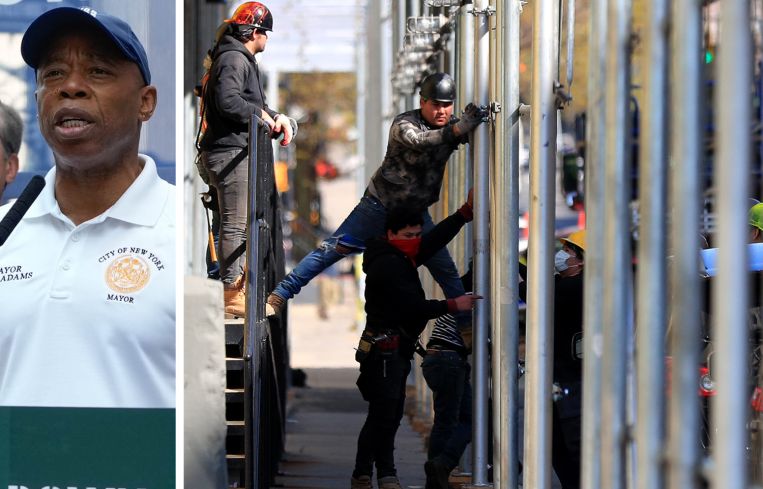NYC Sidewalk Sheds Are Costing Businesses Thousands Each Month: Report
By Isabelle Durso August 14, 2024 3:25 pm
reprints
Sidewalk sheds and scaffolding shadowing Manhattan’s streets are costing Gotham more than just an unsightly streetscape.
Manhattan businesses located in buildings with sidewalk sheds see Mastercard cardholders spend between $3,900 and $9,500 less every month, according to a study commissioned by New York City and conducted through Mastercard.
Businesses most negatively impacted by the scaffolding include restaurants and bars, which reported a 3.5 percent to 9.7 percent decrease in “weekly transactions in the six months following shed construction,” the study released Wednesday found.
“Too many businesses throughout New York City have been shrouded by hundreds of miles of sidewalk sheds and scaffolding, some of which have been up for decades,” Mayor Eric Adams said in a statement. “Those sheds may have gone up to keep people safe, but they’re still up because it’s cheaper for building owners to leave them up than to fix their buildings. That’s bad for public safety, bad for our city, and, as this study shows us, bad for business, too.”
Scaffoldings have been a common fixture of the city — with some remaining up for decades — thanks to Local Law 11. The rule requires most New York City buildings to repair their facades — and build a sidewalk shed in the process — every five years, Commercial Observer previously reported.
For years, local politicians have called for a slate of changes to Local Law 11, and, in July 2023, Adams and Department of Buildings Commissioner James Oddo revealed their “Get Sheds Down” plan aimed at getting sidewalk sheds removed from buildings quicker. As part of those new policies, the city will penalize building owners who leave sidewalk sheds up too long and add fees to renew permits for the sheds, the mayor previously said.
There are more than 4,000 scaffoldings on the streets in Manhattan alone, and over 230 scaffolds across the entire city have been up for more than five years, CO previously reported.
Adams said on Wednesday that his administration has already taken down 173 miles of existing sidewalk sheds in the past year, as well as removed 259 long-standing sheds — which had been up for over five years — from streets. That included a shed in Harlem that had been standing for more than 21 years.
“I think most New Yorkers intuitively knew that a gloomy sidewalk shed has a negative impact on storefront businesses, but, thanks to this study, we now have data to back that up, in plain dollars and cents,” Oddo said in a statement. “Sidewalk sheds are an important safety tool to protect the public from unsafe building conditions, but when building owners leave them up for years on end while repairs languish, it robs New Yorkers of vibrant streetscapes and takes money out of the pockets of small business owners.”
Aside from penalties for leaving a shed up too long, Adams’s proposed solutions also include allowing a wider variety of colors on sidewalk sheds and brighter lighting requirements for the scaffolding, the mayor said.
The New York City Department of Buildings also announced plans last year to hold a design competition for new sidewalk sheds that are “more visually appealing” while still “offering critical overhead protection from any potential hazards,” the mayor’s office said last July.
A more visually appealing sidewalk shed isn’t a brand new idea. Back in 2011, then-Mayor Michael Bloomberg also held a sidewalk shed design competition, won by contractor Urban Umbrella, which designs alternatives to traditional sidewalk scaffolding in the city.
In January 2022, Urban Umbrella announced that it had raised $6.5 million in venture debt and had installed its scaffolding at 100 sites throughout the city.
Isabelle Durso can be reached at idurso@commercialobserver.com.



